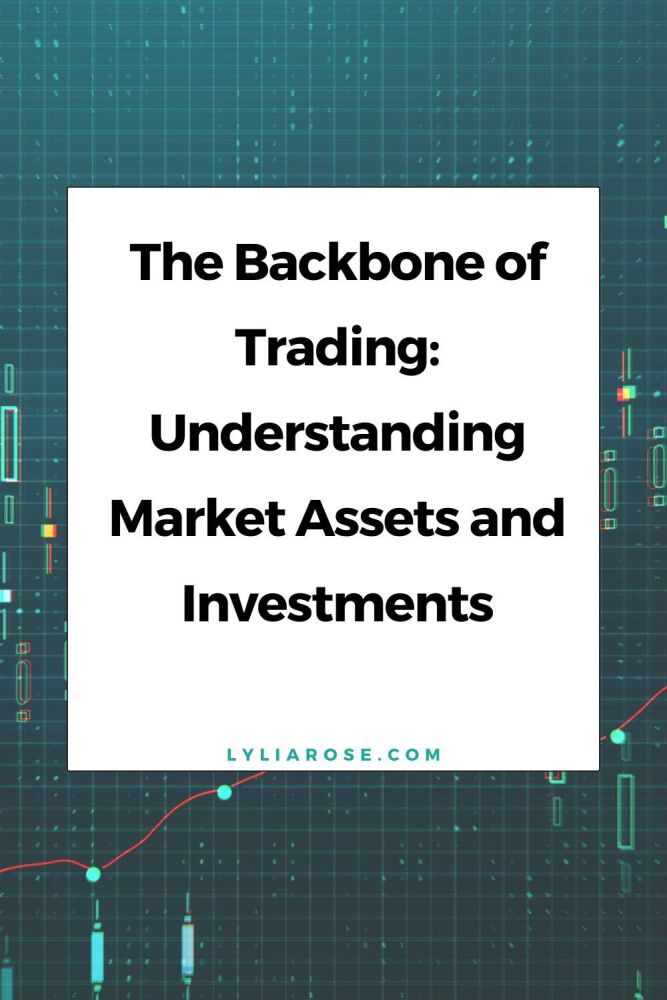The Backbone of Trading: Understanding Market Assets and Investments
Posted on
Comprehending the various market assets and investments is essential when it comes to investing. Regardless of your level of expertise, having a thorough grasp of these assets, including what is a stock, will help you make wise choices and increase your profits. The main categories of market assets and investments will be covered in this article, including stocks, bonds, commodities, FX, cryptocurrencies, ETFs, mutual funds, options and futures.

Stocks: Owning a slice of a company's success
Equities, usually synonymous with stocks, are ownership interests in publicly traded corporations. An individual who holds stock has a proportionate interest in the firm's assets, profits and voting rights. Individuals investing in stocks means that they will benefit if a company expands or succeeds.
Accordingly, the two types of shares that make up stocks are common and preferred shares, each with a unique set of rights and benefits. Investors often conduct fundamental analysis when evaluating stocks, examining factors like financial statements, market trends and industry outlook. Under the same, diversification across different industries and market sectors is a common strategy to spread risk. In long-term wealth building, stocks play a vital role and are a cornerstone of many investment portfolios.
Bonds: Fixed-income securities for stable returns
On the other hand, you have bonds. Bonds are debt securities governments, municipalities, or corporations issued to raise capital. They represent a promise to repay the principal amount along with periodic interest payments over a specified period. Bonds are considered fixed-income securities because they offer a predictable stream of income.
Investors choose bonds for their relative stability and lower risk compared to stocks. They are particularly appealing to those seeking regular income and capital preservation. Different types of bonds, including government, corporate and municipal, cater to varying risk appetites. Considerately, incorporating bonds into a diversified portfolio helps balance risk and potentially enhance overall returns.
Commodities: Tangible goods as tradable assets
Moreover, many tangible goods are included under the category of commodities, including metals, raw materials, agricultural goods, energy and other resources. Unlike financial assets, commodities are exchanged on physical or futures markets and have an inherent worth. It's worth noting that demand and supply, geopolitical developments and weather all impact their pricing.
Commodities expose investors to tangible products supporting different businesses and sectors. Ideally, investors can participate in the commodity market through futures contracts, exchange-traded funds (ETFs), or by holding real commodities. Significantly to diversification plans, commodities are a buffer against inflation and economic instability.
Forex: Navigating the foreign exchange market
The world's currency exchange occurs in the foreign exchange market or forex. There, currencies are bought and sold in relation to one another based on exchange rates. It is the biggest and most liquid financial market. Interest rates, economic indicators, geopolitical events and central bank policies are some of the variables that influence forex trading.
Moreover, currency exchange rate changes are a source of profit for forex traders. They can trade in futures, options, or spot transactions. Given that the forex market is open every day of the week, 24 hours a day, it gives traders plenty of possibilities to transact in different time zones.
Cryptocurrencies: Digital assets in the modern age
Built on blockchain technology invented in 2009, cryptocurrencies are a new type of digital cash. They function on distributed networks, which provide special qualities, including openness, security, and the opportunity for innovation. The first cryptocurrency, Bitcoin, released by pseudonym Satoshi Nakamoto in 2009, paved the way for hundreds more substitute cryptocurrencies.
Comprehending blockchain technology, market dynamics and regulatory issues are prerequisites for investing in cryptocurrencies. Factors like scalability, adoption rates and technological advancements impact their value. Keep in mind, that cryptocurrencies offer both opportunities for substantial gains and exposure to higher volatility, making them a dynamic frontier for investors seeking to participate in the modern digital economy.
ETFs and mutual funds: Diversifying investments
Mutual funds and exchange-traded funds (ETFs) are investment instruments that aggregate money from several individuals to invest in various assets. Accordingly, stocks, bonds, commodities and other instruments may be included in these funds. Mutual funds are managed by seasoned fund managers, whereas ETFs are exchanged on exchanges like individual equities.
Notably, mutual funds and ETFs provide investors with a productive option to diversify their holdings across various assets. They expose you to several market segments and can disperse risk. They also provide liquidity and expert management, making them well-liked options for new and seasoned investors trying to create diverse portfolios.
Options and futures: Derivatives for advanced traders
Lastly, the complex financial products known as derivatives include options and futures. Examples of the underlying assets from which financial instruments get their value include commodities, stocks, or other financial instruments. Options provide the holder the option to buy or sell the asset in question at a certain price prior to or on a specified date, but they do not require them to. On the other hand, futures are contracts that obligate the parties to acquire or dispose of the underlying asset at a defined price in the future.
Options and futures are frequently utilised for sophisticated trading tactics, market speculation and price hedging. However, they can carry higher degrees of risk than conventional investments and need a thorough grasp of the underlying markets. They are mostly used by seasoned traders and institutional investors trying to optimise their investing approaches.



